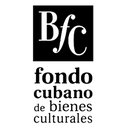Executive Secretary

IV International Conference on Sustainable Energy Development
CIDES 2025
In 2019, buildings were responsible for 21% of greenhouse gas emissions; a significant portion of this is due to the use of heating, ventilation and air conditioning (HVAC) systems, which accounts for about 12% of global energy end-use. Climate change, population growth and economic development will significantly increase the demand for cooling in buildings. Therefore, it is essential to implement actions to adapt buildings to the conditions of the future; one promising measure is passive cooling techniques, such as the incorporation of vegetation in walls and roofs. This paper analyzes the energy consumption for cooling of a building with a green roof subjected to the climatic conditions of Mexico. The study is carried out by means of mathematical modeling and dynamic simulation of the heat transfer processes in the building envelopes and considers the use of HVAC equipment with inverter technology to reach the comfort temperature when the green roof is not sufficient. The results show that the implementation of green roofs contributes significantly to reach the comfort temperature inside the building and significantly reduces the energy consumption for cooling.
En 2019 los edificios fueron responsables del 21% de las emisiones de gases de efecto invernadero; parte importante de éstas se debe al uso de sistemas de calefacción, ventilación y aire acondicionado (HVAC) que representa alrededor del 12% del uso final de energía a nivel mundial. El cambio climático, el aumento de la población y el desarrollo económico incrementarán significativamente la demanda de refrigeración en los edificios. Por lo que, es fundamental implementar acciones para adaptar los edificios a las condiciones del futuro, una medida prometedora son las técnicas pasivas de refrigeración, como la incorporación de vegetación en muros y techos. El presente trabajo analiza el consumo de energía, destinado a la refrigeración, de un edificio con techo verde sometido a las condiciones climáticas de México. El estudio se realiza por medio del modelado matemático y la simulación dinámica de los procesos de transferencia de calor en las envolventes del edificio y se considera el uso de un equipo HVAC con tecnología “inverter” para alcanzar la temperatura de confort cuando el techo verde no es suficiente. Los resultados muestran que la implementación de techos verdes contribuye de manera importante a alcanzar la temperatura de confort dentro del edificio y reduce significativamente el consumo de energía destinado a la refrigeración.
About The Speaker

Dr. Sergio Quezada García

Discussion






